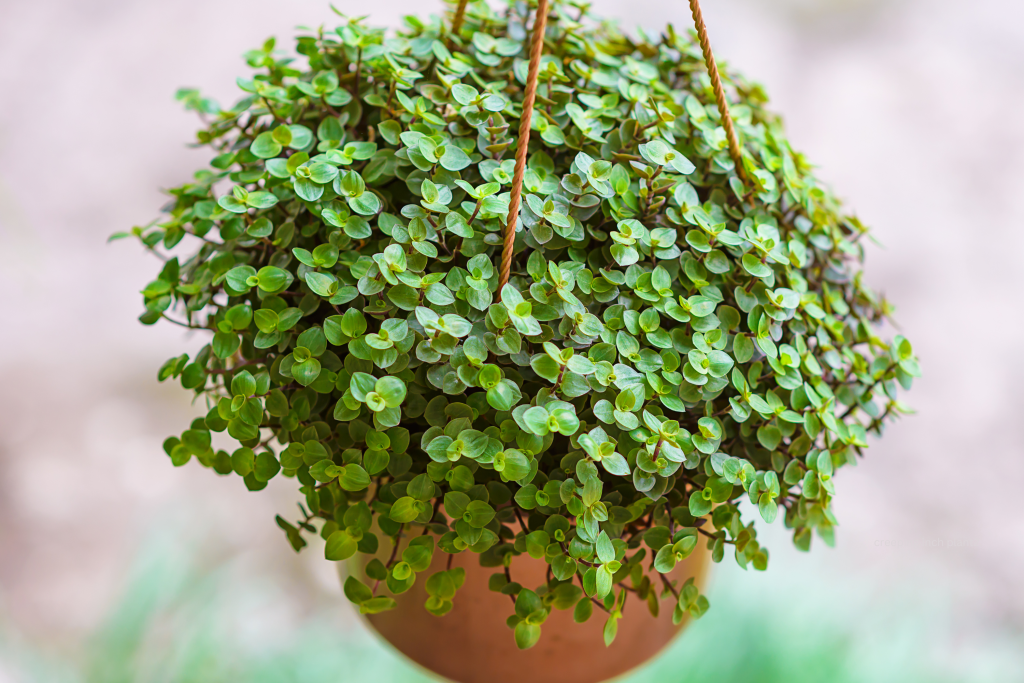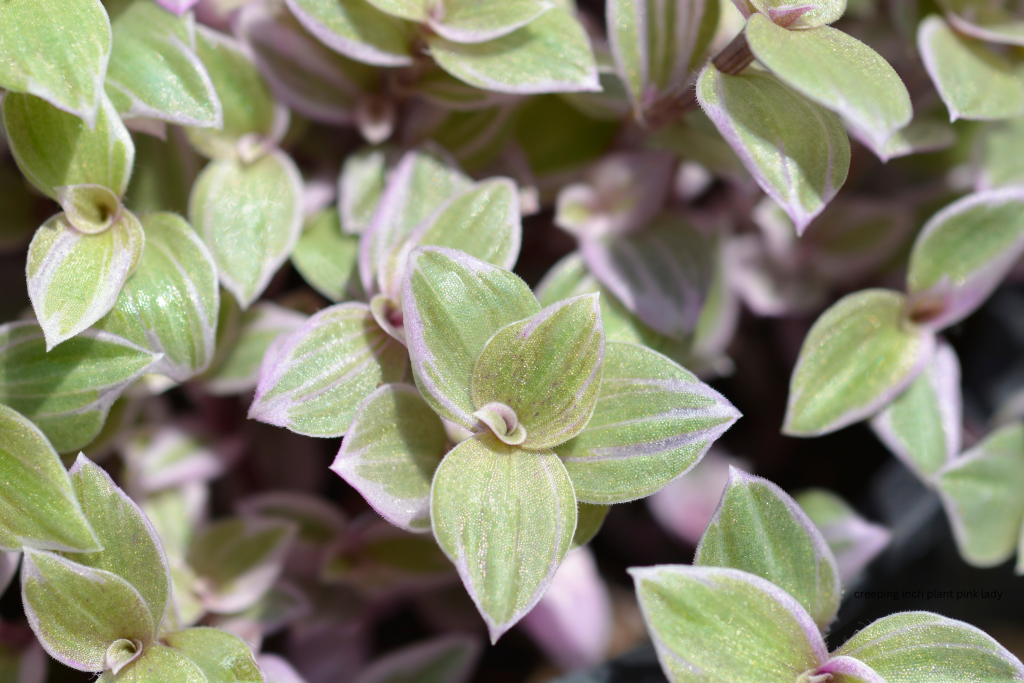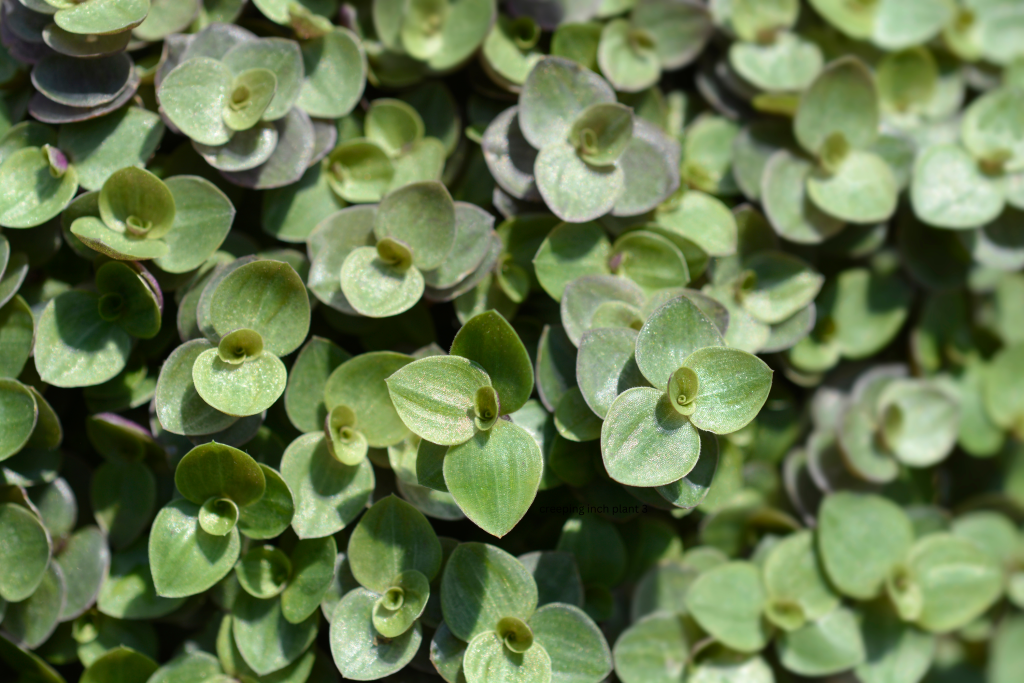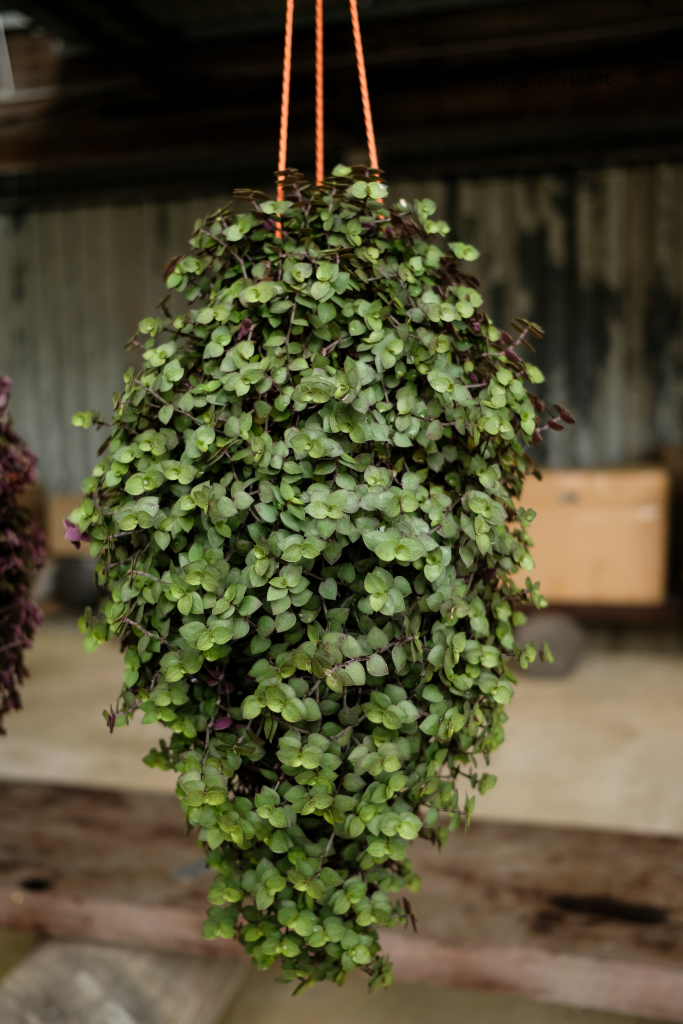Introduction
Houseplants are more than just decorative pieces; they add life and vibrancy to our homes, improve air quality, and can even boost our mood. Among the many varieties available, the Creeping Inch Plant (Callisia repens) stands out for its unique beauty and ease of care. This blog will delve into the characteristics, care tips, and benefits of having a Creeping Inchplant in your home.

Characteristics of the Creeping Inch Plant
Creeping Inch Plant, also known as Turtle Vine, Inch Plant, or Bolivian Jew, is a member of the Commelinaceae family. It’s a low-growing, trailing plant known for its small, fleshy leaves that come in shades of green, purple, and sometimes variegated patterns. This plant is native to Central and South America, thriving in tropical and subtropical climates.
One of the most striking features of the Creeping Inch Plant is its compact growth habit and vibrant foliage. The leaves are oval-shaped and densely packed along thin stems, creating a lush, cascading effect that makes it perfect for hanging baskets or as ground cover in garden beds.
Care Tips for Creeping Inch Plant

Caring for a Creeping Inch Plant is relatively simple, making it an excellent choice for both novice and experienced plant enthusiasts. Here are some essential care tips to keep your plant thriving:
Light
Creeping Inch plants prefer bright, indirect light. They can tolerate lower light conditions, but their growth might become leggy, and the vibrant colors of the leaves may fade. Placing the plant near a north or east-facing window is ideal.
Water
These plants like to be kept moist but not waterlogged. Water your Creeping Inchplant when the top inch of soil feels dry. Ensure the pot has drainage holes to prevent water from accumulating at the bottom, which can lead to root rot. In winter, reduce the watering frequency as the plant’s growth slows down.
Soil
A well-draining potting mix is crucial for the Creeping Inchplant. A mixture of standard potting soil with some added perlite or sand works well. This ensures good drainage and prevents the soil from becoming too compacted.
Temperature and Humidity
Creeping Inch plants thrive in temperatures between 60-75°F (15-24°C). They appreciate higher humidity levels, so misting the plant occasionally or placing it near a humidifier can be beneficial, especially in dry indoor environments.
Fertilization
During the growing season (spring and summer), feed your Creeping Inchplant with a balanced, water-soluble fertilizer every month. In the fall and winter, you can reduce or stop fertilization as the plant’s growth slows.
Benefits of Creeping Inchplant

Aesthetic Appeal
The Creeping Inch plant’s lush foliage and trailing habit make it a visually appealing addition to any home. It can be used in various ways, from hanging baskets to tabletop displays, adding a touch of greenery and elegance to your decor.
Air Purification
Like many houseplants, the Creeping Inchplant helps improve indoor air quality. It absorbs carbon dioxide and releases oxygen, contributing to a healthier living environment. Additionally, it can help filter out certain toxins from the air, making your home fresher and cleaner.
Low Maintenance
One of the most significant advantages of the Creeping Inchplant is its low maintenance requirements. It can adapt to different light conditions and doesn’t demand frequent watering or fertilization, making it an easy-care plant for busy lifestyles.
Conclusion

The Creeping Inchplant is a versatile and vibrant houseplant that can enhance any indoor space with its lush foliage and easy-care nature. Whether you’re a seasoned plant enthusiast or just starting your plant journey, this charming plant is a wonderful addition to your collection. By following the simple care tips outlined in this blog, you can enjoy the beauty and benefits of the Creeping Inchplant in your home for years to come.



